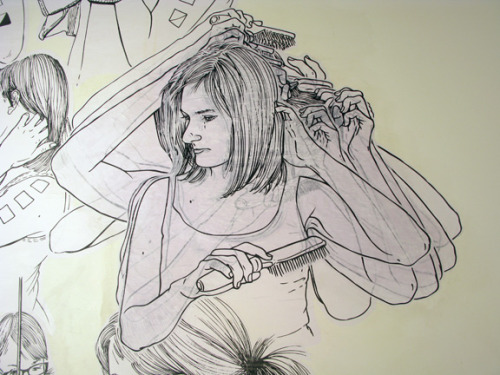
A few weeks ago, I scrambled across town on the streetcar to pick up a copy of
Robert Adams'
What Can We Believe Where? from what is perhaps the only bricks-and-mortar bookstore left in Toronto that's arty enough to stock it. (That store was the always-worth-a-visit
Type Books, by the way.)
There was a bit of irony to this endeavour, I guess, (or at least
Alanis Morissette might say so) because Adams, who was an english lit professor before he was a photographer, tended to focus throughout his career on distributing his art through books. Sure,
he ended up showing in big galleries too, but he believed books were the best way to get his images and sequenced narratives out there.
In a way, this bookish principle remained true for me this time out as well; Adams' career retrospective, organized by
Yale University Art Gallery, is currently on at the
Vancouver Art Gallery, thousands of miles from where I live; so this relatively affordable paperback ($26), which contains about a third of the pictures from the show, was really my best entry point. Given, er, that I was able to track it down what seemed to be the only copy available for retail sale in Toronto. (It is also available from the major online booksellers, but I didn't have time to wait for shipping.)
Today in the National Post, I ponder What Can We Believe Where? and what it means for audiences today in terms of both form and content. Along the way, I got to speak with
Yale University Art Gallery director Jock Reynolds and think about how Adams' ideas on place connected with my reaction to recent elections across North America. An excerpt:
Recent municipal elections across Canada, like this month's U.S. mid-terms, have highlighted the connection between place and politics. These outings show that North America's continental divide isn't just one line on a map; boundaries of east vs. west, north vs. south, urban vs. rural and suburban vs. downtown are also often marked at the ballot box.
Oregon photographer Robert Adams is well familiar with this intertwining of geography and judiciousness. His new book What Can We Believe Where? (an accompaniment to a new touring retrospective, The Place We Live, currently on at the Vancouver Art Gallery) concisely spans 40 years of his photographs of the American West. In its introduction, the 73-year-old Adams reiterates the questions that have intrigued him throughout his career: "What does our geography compel us to believe? What does it allow us to believe? And what obligations, if any, follow from our beliefs?"
Leafing through this compact paperback, it's clear that Adams' take is a complex balance of horror and hope. The book's 109 images, chosen from 2,000 of Adams' best prints, often focus on what some call environmental disasters -- the massive 1970s expansion of Denver-area tract housing, the 1980s growth of the Los Angeles smog bowl, and this decade's Coos County clear-cuts. But these sobering sequences (expanded to comprise 300 prints in the retrospective exhibition) are also woven with gentler scenes: a warm-hearted farmland coffee klatsch, a beautiful grove of prairie poplars, a gleeful toddler greeting her family.One thing that I was glad to hear from Reynolds was that Yale co-curator Joshua Chang did manage to convince Adams, and his partner/collaborator Kiersten, that it would be a good idea to try and distribute his photos from the show through some 21st-century means--namely,
a website--as well as through these nicely produced books.
I do urge ya'll to check out the resulting survey exhibition site at
http://artgallery.yale.edu/adams/.
If Robert Adams was a young photographer today, I wonder if he'd be a steadfast Flickr or Tumblr user, twigged to these non-gallery, populist means of distributing photography. We'll never know, but I'm glad that his exhibition has been put online and in print form for those of us who can't make it to the show. And for those who can make it to Vancouver, the show will be up until January 16, after which it travels to Los Angeles, New Haven, Madrid and other sites.
To read more about the new book and Adams' work,
visit the National Post.
(Image of Robert Adams' Edge of San Timoteo Canyon, looking toward Los Angeles, Redlands, California 1978 Courtesy Yale University Art Gallery and via
Canadian Art)
 I think even my computer wants me to start my holiday, because it auto-published this post a few times before I even typed anything.... soooooo.... HAPPY HOLIDAYS! Or just at least HOLIDAYS!!! I hope ya'll get some time off. I'm planning on trying to take off until January 3. If you're in dire need of online art fellow-feeling in the meantime, I recommend the following:
I think even my computer wants me to start my holiday, because it auto-published this post a few times before I even typed anything.... soooooo.... HAPPY HOLIDAYS! Or just at least HOLIDAYS!!! I hope ya'll get some time off. I'm planning on trying to take off until January 3. If you're in dire need of online art fellow-feeling in the meantime, I recommend the following:




















